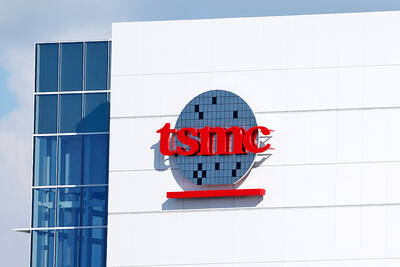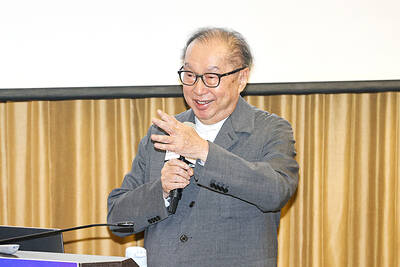HTC Corp (宏達電) maintained a 3.1 percent share of the global smartphone market in the first quarter as its share gains in North America were offset by losses in other regions, US brokerage Morgan Stanley said on Friday.
The brokerage firm said the Taiwanese firm’s market share rose slightly to 4.2 percent in the quarter in North America from 3.5 percent in the fourth quarter of last year, thanks to the launch of the 5-inch HTC Droid DNA phone, which went on sale in November last year through US carrier Verizon Wireless.
However, the company was not able to drive up its global market share, given ongoing share losses in the European, the Middle East and African (EMEA) markets, and slow progress in the Asia-Pacific region — especially in China, Morgan Stanley said in a report.

Photo: AFP
The report detailed how HTC’s market share in the EMEA markets fell to 3.7 percent from 4.2 percent in the fourth quarter, with market share in the Asia-Pacific region shrinking to 2.7 percent from 3 percent.
Meanwhile, the top four Chinese handset makers increased their share to 28 percent in the first quarter, compared with 21 percent in the same period of last year, at the expense of international brands, including Apple Inc, Morgan Stanley analysts said.
“We see local Chinese brands gaining share as positive for [chip designers] MediaTek Inc (聯發科技) and Spreadtrum Communications Inc (展訊). Our research also suggests strong smartphone chipset growth in the second quarter of 2013,” the analysts said.
The top four Chinese vendors are Huawei Technologies Co (華為), ZTE Corp (中興), Lenovo Group Ltd (聯想) and Coolpad (酷派), Morgan Stanley said.
Tech tracking firm International Data Corp (IDC) reported on April 25 that Huawei and ZTE were the world’s fourth and fifth-largest smartphone suppliers respectively in the first quarter, thanks to incremental gains in shipments.
Huawei shipped 9.9 million units in the quarter, up 94.1 percent from one year earlier to take a 4.6 percent share of the global market, while ZTE’s shipments grew 49.2 percent year-on-year to 9.1 million units for a 4.2 percent market share.
South Korea’s Samsung Electronics Co remained the world’s largest smartphone vendor with shipments of 70.7 million units, up 60.7 percent from one year earlier, for a 32.7 percent share of the global market, IDC said.
Apple came in second with 37.4 million units shipped in the three-month period for a 17.3 percent share, while South Korea’s LG Electronics Inc shipped 10.3 million units to hold a 4.8 percent market share, according to IDC.

SEASONAL WEAKNESS: The combined revenue of the top 10 foundries fell 5.4%, but rush orders and China’s subsidies partially offset slowing demand Taiwan Semiconductor Manufacturing Co (TSMC, 台積電) further solidified its dominance in the global wafer foundry business in the first quarter of this year, remaining far ahead of its closest rival, Samsung Electronics Co, TrendForce Corp (集邦科技) said yesterday. TSMC posted US$25.52 billion in sales in the January-to-March period, down 5 percent from the previous quarter, but its market share rose from 67.1 percent the previous quarter to 67.6 percent, TrendForce said in a report. While smartphone-related wafer shipments declined in the first quarter due to seasonal factors, solid demand for artificial intelligence (AI) and high-performance computing (HPC) devices and urgent TV-related orders

BYPASSING CHINA TARIFFS: In the first five months of this year, Foxconn sent US$4.4bn of iPhones to the US from India, compared with US$3.7bn in the whole of last year Nearly all the iPhones exported by Foxconn Technology Group (富士康科技集團) from India went to the US between March and last month, customs data showed, far above last year’s average of 50 percent and a clear sign of Apple Inc’s efforts to bypass high US tariffs imposed on China. The numbers, being reported by Reuters for the first time, show that Apple has realigned its India exports to almost exclusively serve the US market, when previously the devices were more widely distributed to nations including the Netherlands and the Czech Republic. During March to last month, Foxconn, known as Hon Hai Precision Industry

Taiwan Semiconductor Manufacturing Co (TSMC, 台積電) and the University of Tokyo (UTokyo) yesterday announced the launch of the TSMC-UTokyo Lab to promote advanced semiconductor research, education and talent development. The lab is TSMC’s first laboratory collaboration with a university outside Taiwan, the company said in a statement. The lab would leverage “the extensive knowledge, experience, and creativity” of both institutions, the company said. It is located in the Asano Section of UTokyo’s Hongo, Tokyo, campus and would be managed by UTokyo faculty, guided by directors from UTokyo and TSMC, the company said. TSMC began working with UTokyo in 2019, resulting in 21 research projects,

Quanta Computer Inc (廣達) chairman Barry Lam (林百里) yesterday expressed a downbeat view about the prospects of humanoid robots, given high manufacturing costs and a lack of target customers. Despite rising demand and high expectations for humanoid robots, high research-and-development costs and uncertain profitability remain major concerns, Lam told reporters following the company’s annual shareholders’ meeting in Taoyuan. “Since it seems a bit unworthy to use such high-cost robots to do household chores, I believe robots designed for specific purposes would be more valuable and present a better business opportunity,” Lam said Instead of investing in humanoid robots, Quanta has opted to invest